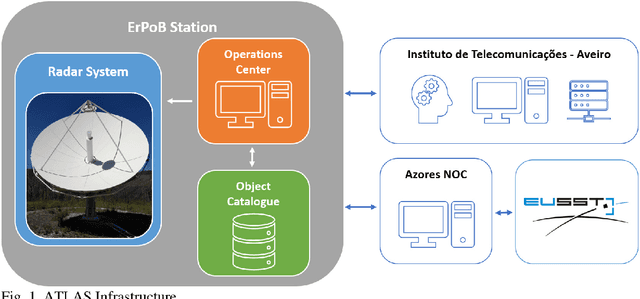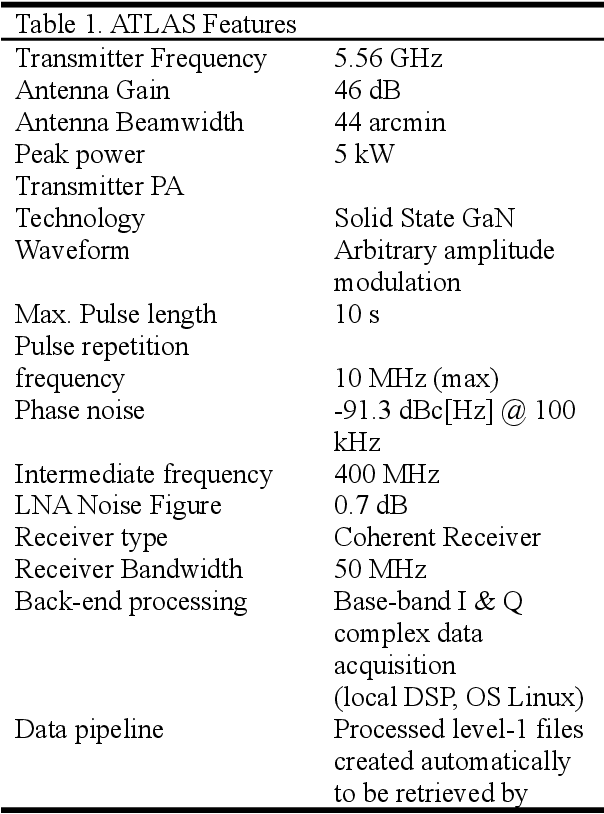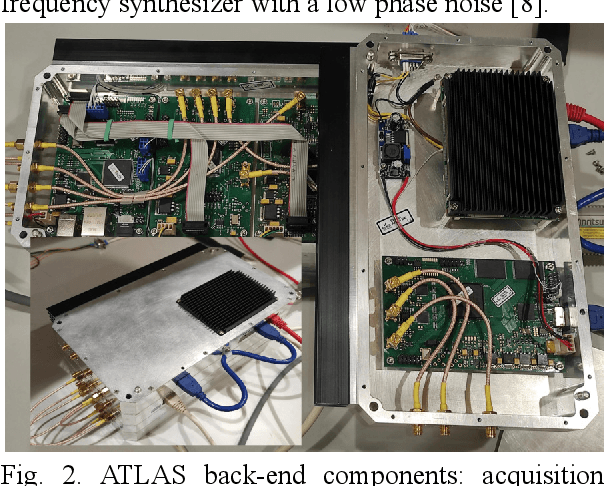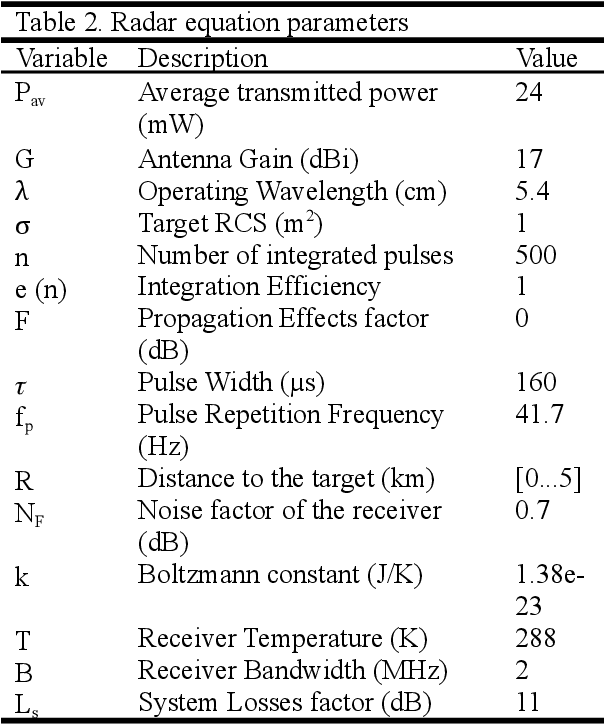A Portuguese radar tracking sensor for Space Debris monitoring
Paper and Code
Nov 03, 2021



The increase in space debris is a threat to space assets, space based-operations and led to a common effort to develop programs for dealing with this increase. As part of the Portuguese Space Surveillance and Tracking (SST) project, led by the Portuguese Ministry of Defense (MoD), the Instituto de Telecomunica\c{c}\~oes (IT) is developing rAdio TeLescope pAmpilhosa Serra (ATLAS), a new monostatic radar tracking sensor located at the Pampilhosa da Serra Space Observatory (ErPoB), Portugal. The system operates at 5.56 GHz and aims to provide information on objects in low earth orbit (LEO) orbits, with cross sections above 10 cm2 at 1000 km. ErPoB houses all the necessary equipment to connect to the research and development team in IT-Aveiro and to the European Union Space Surveillance and Tracking (EU-SST) network through the Portuguese SST-PT network and operation center. The ATLAS system features digital waveform synthesis, power amplifiers using Gallium Nitride (GaN) technology, fully digital signal processing and a highly modular architecture that follows an Open Systems (OS) philosophy and uses Commercial-Off-The-Shelf (COTS) technologies. ATLAS establishes a modern and versatile platform for fast and easy development, research and innovation. The whole system (except antenna and power amplifiers) was tested in a setup with a major reflector of opportunity at a well defined range. The obtained range profiles show that the target can be easily detected. This marks a major step on the functional testing of the system and on getting closer to an operational system capable of detecting objects in orbit.
 Add to Chrome
Add to Chrome Add to Firefox
Add to Firefox Add to Edge
Add to Edge